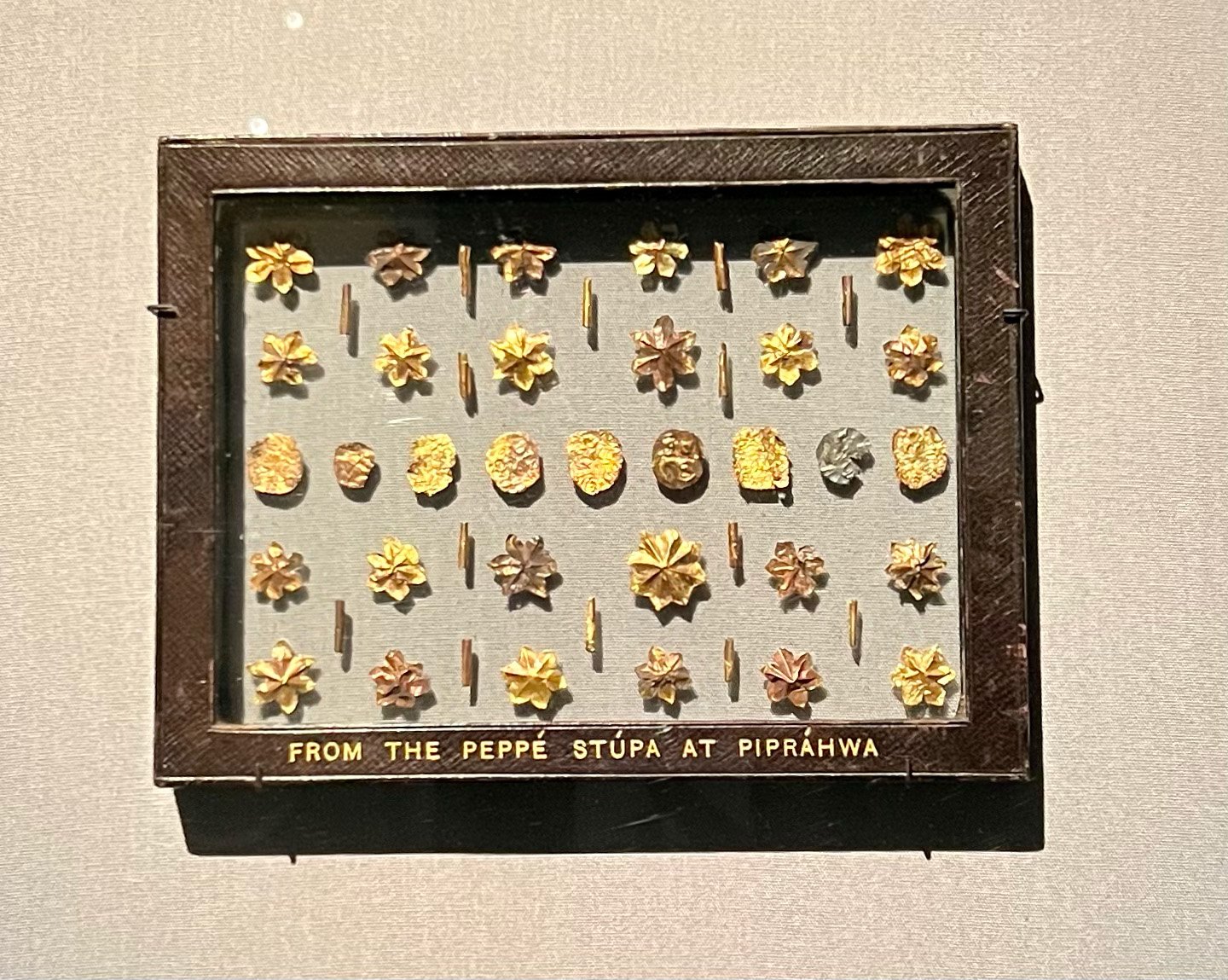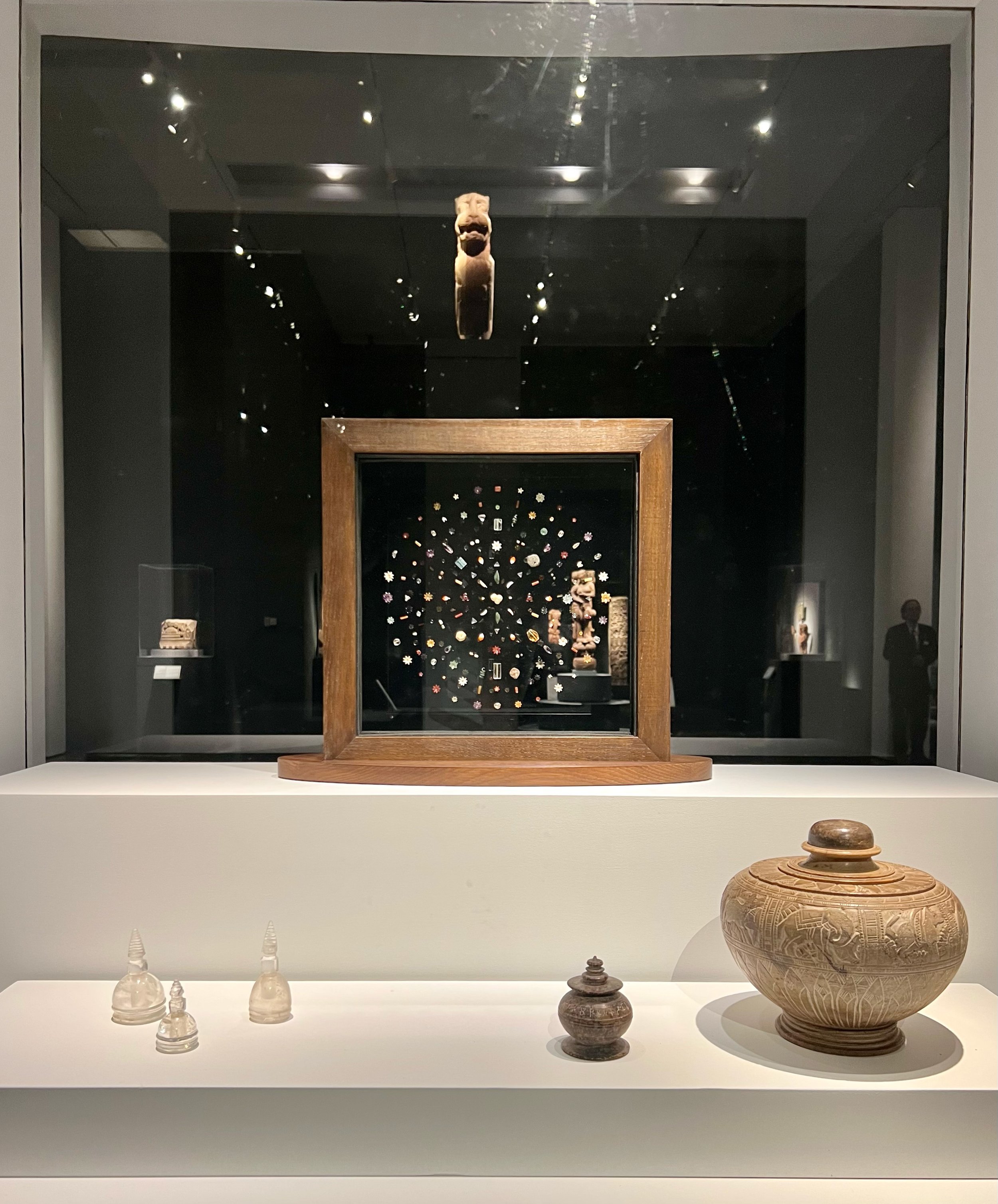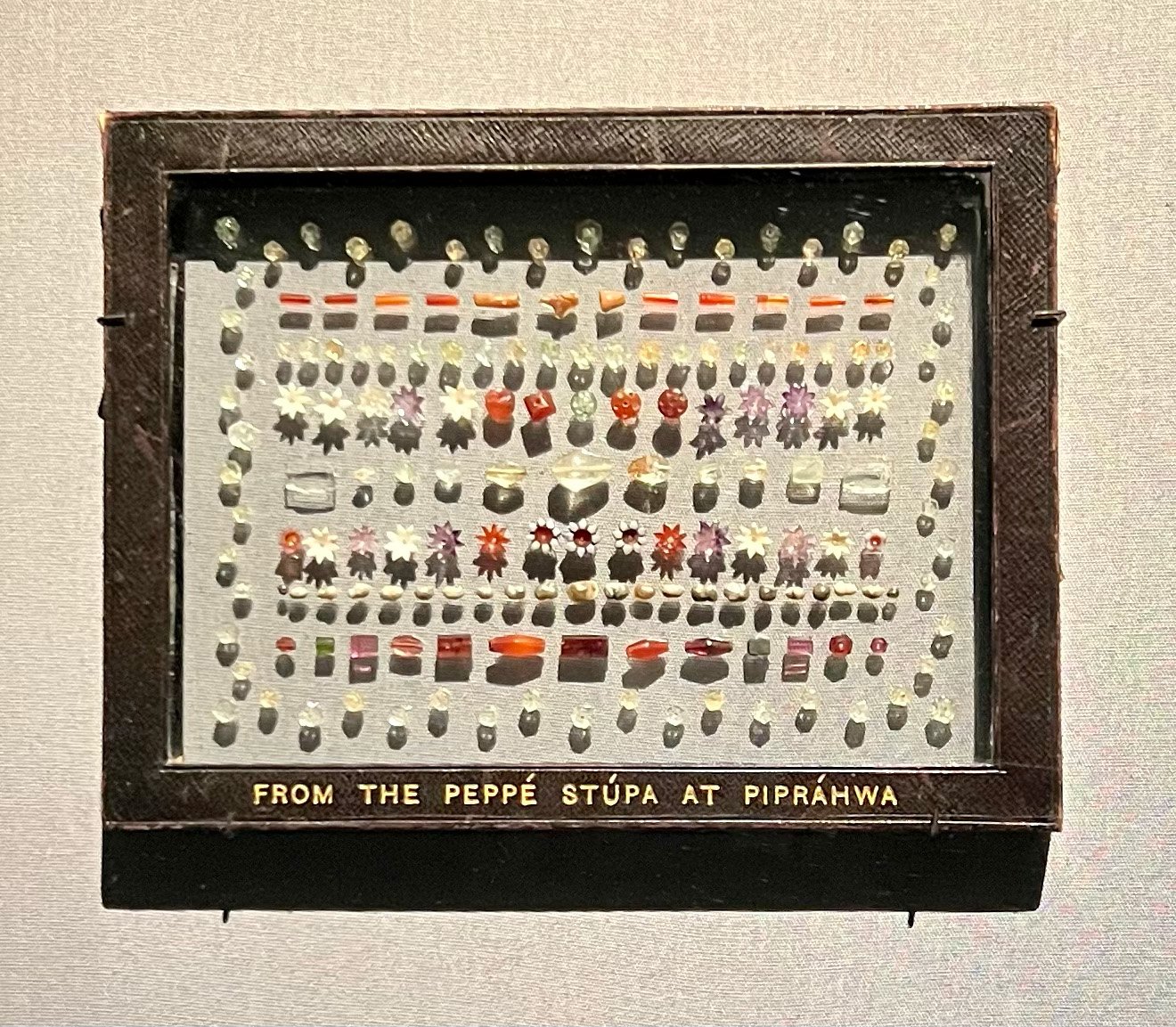Buddhist Relics On View At The Met This Fall
Photo by Jillian Cheney
NEW YORK — Enter exhibition gallery 999 at the Metropolitan Museum of Art and expect an imposing welcome. The walls are dark gray, and the several elaborately carved stone artifacts are lit with radiant spotlight.
In the center of it all: a monumental white dome with one entrance to a secluded inner sanctum.
This circular centerpiece is a reproduction of a stupa, a sacred building in Buddhism that traditionally housed the cremated remains of the Buddha or other relics.
READ: Britain’s Faith Museum And 6,000 Years Of History
The stupa is a narrative vehicle for exploring the influences and growth of early Buddhism in the exhibit “Tree & Serpent: Early Buddhist Art in India, 200 BCE–400 CE.” Most of the sculptures in the exhibit are engraved portions of stupas; additionally, the exhibition pieces come from southern India, an overall less-studied region when it comes to Buddhist art.
The central stupa dictates that visitors navigate the exhibit in a circular fashion, creating a ritualistic flow. It’s not dissimilar to the practice of circumambulation — called pradakshina in Buddhism — or the ritual practice of walking around a sacred object or on a sacred path. Circumambulation of stupas is common, performed in order to aid meditation and purify negative karma. The only difference, in fact, is that in pradakshina, the worshipper navigates clockwise, and visitors to this exhibit navigate counterclockwise.
It’s a small illustration of the importance of stupas in the practice of Buddhism. But the importance goes beyond that, making it an ideal example to examine religious practice. Stupas are places of meditation, but they’re also social hubs and sites for religious celebration.
Stupas preceded Buddhism, but they became a fundamental part of the religion and spread as Buddhism did. This is similar to many notable symbols, particularly the snake and the tree.
Railing pillar taken from a stupa that depicts the naga protecting the Buddha. (Photo by Jillian Cheney)
Nature cults and corresponding spirits were common before the birth of the Buddha — Siddhartha Gautama — and their beliefs became part of Buddhism, both religiously and artistically.
Snake shrines in India were often chosen as locations for new monasteries, and snakes are common in the art that decorated stupas. Trees, a notable feature of the foundational events of Buddhism, are likewise important. The two intertwine in the story of the Buddha’s discovery of true enlightenment.
According to Buddhist scripture, the Buddha meditated beneath the Bodhi tree (a fig tree in northeast India) for seven weeks and gained enlightenment. In the final week, a great storm formed, and it rained for seven days — but a snake spirit, the naga, formed a shelter over his head and protected him from the elements.
The naga has therefore been a regular feature of Buddhist art through the ages, often featured as a protector. Other common symbols are lotus flowers and an empty throne.
Often, the nature spirits themselves appear in artistic representations. Yakshas and yakshis — male and female deities, respectively — also precede Buddhism, but they play an important role in its development.
The nature spirits were initially seen as vicious and cruel, appeased with rich offerings to gain peace, protection, rain and sometimes wealth. Under the Buddha and through his teaching, these spirits became pillars of the faith who protected and blessed worshippers. These early symbols are prevalent throughout the exhibit, developing over time to become a deeper part of Buddhist belief and practice.
Proceeding around the circle advances the viewer chronologically through different periods and important trends.
In early Buddhist art, the Buddha was not personified — instead, he was depicted in art through a number of symbols that represented the most important parts of his character. Carvings and sculptures show him as a flaming pillar, an empty throne, a wheel. Of these, the wheel is most prevalent. It’s used often in depictions of the Buddha’s first sermon and represents Dharma overall.
His footprints are also shown and revered, depicted with 10 square toes and a wheel on the sole of each foot.
One fascinating portion even shows how the growth of global trade influenced Buddhist art and how Buddhist art influenced other groups. An ivory yakshi excavated in Pompeii and a Roman sculpture of Poseidon excavated in western India are the twin examples of this, but the exhibit features a number of other artifacts: A promotion for an exhibit in Paris in 1938 with artifacts excavated from northern Afghanistan, including Indian ivories and more, and the prevalence of stamped gold coins are only a few.
When the Buddha does appear in artistic representations, it’s with a great deal of reverence for his journey to enlightenment and his character.
Stupas first gained the feature of four commemorative pillars in southern India. These served often as storyboards for narrative scenes.
The Buddha, born as a prince, first chose not accept his royal status, then left the palace in an event called the Great Departure. After his temptation from the demon king Mara and subsequent victory, the Buddha delivered his first sermon and continued to spread his teachings.
These key moments are most commonly illustrated, but past Buddhas and bodhisattvas also feature.
The culmination of this progression of art is in the creation of freestanding sculptures of the Buddha, often used for individual shrines beyond the stupas. The room where these sculptures are displayed is tonally different from the rest of the exhibit, the light much brighter and walls a resplendent yellow.
A magnificent Buddha completes the exhibit and watches over the exit, raised on a pedestal. It’s carved of limestone, but it appears almost golden.
It’s a fitting final piece. The sculpture contains Roman influences and represents the Buddha’s characteristics in subtler but significant detail: such as enlarged earlobes that reference the heavy jewelry he wore in his former life as a prince and eyes rolled back to indicate a deep, meditative state. In this style, the Buddha’s role as a religious figurehead worthy of praise is made clear.
It’s also worth mentioning the interior of the stupa itself — though recreated plainly, it’s filled with the shining jewels (quite literally) of the exhibit. Audio of Buddhist monks chanting a blessing in the spoken word of the Buddha fills the space, and the circular wall is adorned with a collection of relics. The relics are tiny — pieces of gold, pearls and more — believed to have been formed in the ash at the time of the Buddha’s cremation.
These relics come from the private collection of the descendants of William Claxton Peppé, who first excavated them. Though many of the Buddha’s relics exist globally, they’re very rarely on view in the U.S. It’s a rare opportunity to see these relics in person for both locals and visitors and a fascinating look at Buddhism through the lens of artistic tradition.
“Tree & Serpent: Early Buddhist Art in India, 200 BCE–400 CE” is on view at the Met until Nov. 13.
Jillian Cheney is Religion Unplugged’s Senior Culture Correspondent. She writes about film, TV, music, art, books and more. Find her on Twitter @_jilliancheney.







